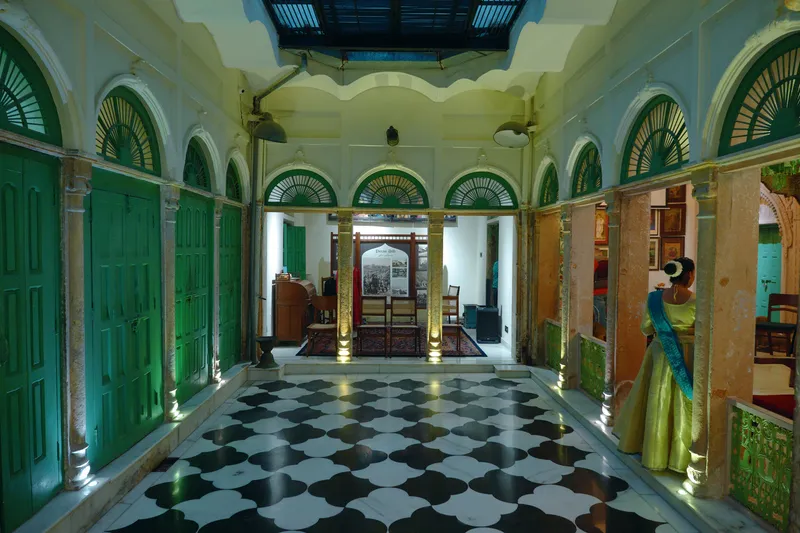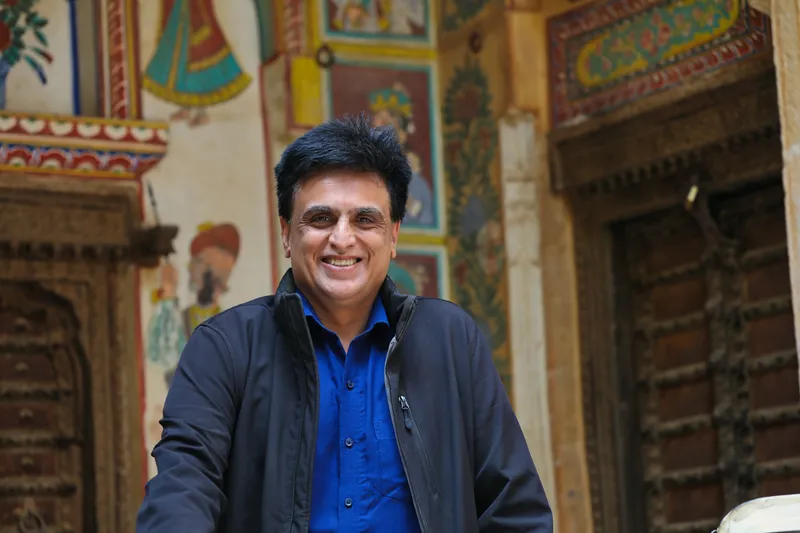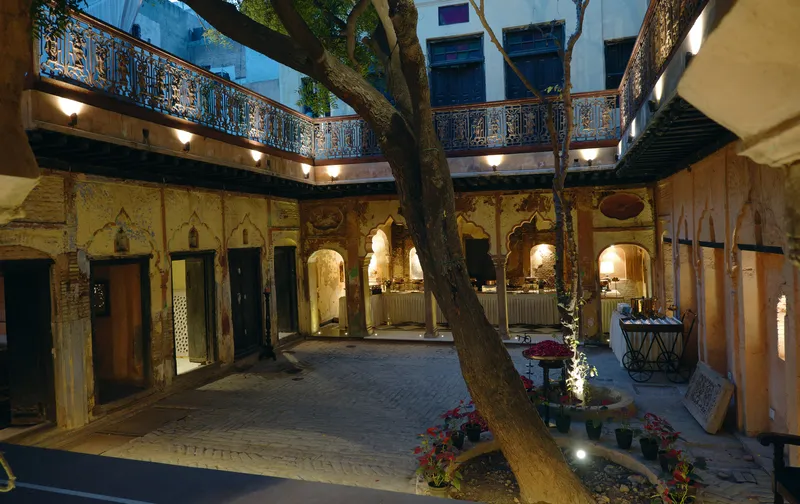Delhi’s restored havelis offer a blueprint for adaptive reuse in urban conservation projects
The Kathika Cultural Centre in Delhi, which is housed in two restored 19th-century havelis, showcases how preserving architectural integrity can help revive historic structures.
Yeh Dilli hai mere yaar, bas ishq, mohabbat, pyar...
Steeped in history and heritage and teeming with colour and cacophony, Delhi, the capital of India, is a melange of sounds, scents, and sights. The metropolis, which straddles the Yamuna River, juxtaposes the old and the new.
Old Delhi brings together majestic monuments, labyrinthine alleys, and crowds of street vendors and bazaars, and stands in stark contrast to New Delhi, a city planned and built by Edwin Lutyens to embody “the ideal of British Empire”, with the elegant Connaught Place, Secretariat, and more.
But rapid urbanisation and population increase have taken a toll on Delhi’s urban fabric, its havelis, and mohallas, impacting the city’s aesthetic and cultural history and its people’s sense of place and connection to the past.
Atul Khanna, a passionate heritage restorer and curator, saw this slow erosion of Delhi’s urban heritage since childhood. He grew up in a haveli in Katra Neel, Old Delhi, and rues the fact that it was sold in family settlement and “is sadly no longer in existence”.
“All heritage was lost with the area transformed into a bustling marketplace. In 2015, I stumbled upon an article in a newspaper showcasing the plight of the now-abandoned Neem Ki Haveli, dilapidated and exposed to the elements,” he recalls.
Determined to revive the haveli’s former glory, he acquired the structure and immediately began the restoration work. His aim was to give back to his roots in Old Delhi by revitalising its forgotten havelis and the traditional way of life that once thrived within their walls.

With sandstone arches and marble pillars, the restored haveli showcases history and heritage.
Khanna believes heritage buildings are a significant part of our society as they are a proof of our history, our traditions, our culture, and our identity. “Therefore, preservation or restoration of heritage becomes our moral duty,” he says.
Over the last eight years, he has spearheaded a restoration movement, emphasising adaptive reuse and preserving architectural integrity while transforming historic structures to meet the needs of contemporary life.
Khanna began by restoring two heritage havelis in Shekhawati region of Rajasthan, which are now run as Vivaana Culture hotel and Vivaana Museum Hotel. He then turned to his own neighbourhood, keen to make old structures useful and restore them to their former glory.
“Adaptive reuse of heritage mansions was our way forward to preserve the cultural fabric of this historic city,” he says.
The Kathika Cultural Centre, housed in two 19th-century havelis—Neem Ki Haveli and the Museum Haveli—located opposite each other in the heart of Mohalla Imli, Sitaram Bazaar, stands as a prime example of his vision. The centre not only offers a glimpse into Old Delhi’s vibrant past, but has also become a dynamic hub for performing arts, heritage workshops, and cultural activities.

Businessman Atul Khanna says he found his calling in heritage and history.
“The aim was to create a space where art and culture could be nurtured in the way it has happened in Old Delhi since mediaeval times. Old Delhi provides a place to everyone who wishes to revive art, heritage, and culture. Our mission was different. Seeing how much Old Delhi has to offer in terms of heritage and history and the fact that it is diverse, we wanted people to experience all this under one roof,” Khanna says.
Kathika offers curated mehfils, baithaks, workshops, heritage walks, museum tours, and cultural events, which aim to change how people perceive the history of Old Delhi. “With more people joining us and additional help and support, we are also starting DIY activities and experiences where people can immerse themselves in local and traditional artforms such as calligraphy, patangabazi, Kathak, and more,” he says.
It is also bridging the gap between past and present through its artefacts, archival photography, and restored spaces.
Storyteller and performer Fouzia Dastango believes that Kathika is “a breath of fresh air in a world” where we seem connected only to digital devices. “It offers cultural programmes that are meaningful, experiential, and immersive. In a time when we seem to be losing our heritage, it plays a vital role,” says India’s first female Indian Dastango artist, who has performed at Kathika.

Kathika offers curated mehfils, baithaks, workshops, heritage walks, museum tours, and cultural events.
The cultural centre also serves as a model for adaptive reuse because of the way it has been restored and is now operated. “The original heritage architectural façade has not been changed. Work has been done to strengthen the foundation, the weak points and the dilapidated areas. Architectural elements that reflected the Mughal and Colonial designs of Old Delhi havelis in the 19th century have been incorporated,” he says.
Khanna collaborated with local artisans and masons from Old Delhi and Rajasthan, tapping their generational knowledge to revive the two havelis.
“We not only wanted to bring back the cultures and traditions of Old Delhi, but also wanted to bring authentic and traditional masonry back to life,” he says.
Local artisans and masons knew the craft of using lime for conservation, along with ways to handle lakhori bricks and cast iron grills to restore the havelis. They had the traditional knowledge of how a traditional Old Delhi haveli looked like, including the design and placement of elements.
“To recreate a place that was reminiscent of Old Delhi in style, essence, and functioning, this collaboration was imperative. They are a strong pillar of architectural restoration and conservation; their knowledge and skill adds life to heritage buildings,” he says.
With sandstone gateways and arches, marble pillars, cast iron grills, majolica tiles, and stained glasses, the restored haveli showcases history and heritage while staying true to its surroundings.
So, is adaptive reuse the way forward for all old buildings?
Khanna says every historical structure is different in build, architecture, nature, and material composition. Depending on the nature, extent of damage, and authentic or original purpose, different conservation methods or techniques could be applied. “But adaptive reuse is definitely one of the best ways of making revived heritage spaces sustainable,” he says.
Going forward, conservation and restoration of Old Delhi’s timeworn structures remains on Khanna’s mind.
“We can create similar opportunities to safeguard our cultural heritage by preserving such havelis and
converting them into cultural centres, hotels, restaurants, and art galleries that celebrate the rich history of the area,” he says.
Edited by Megha Reddy







